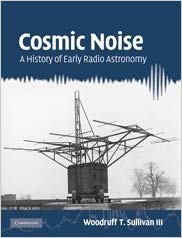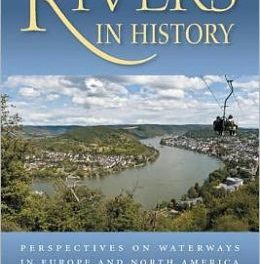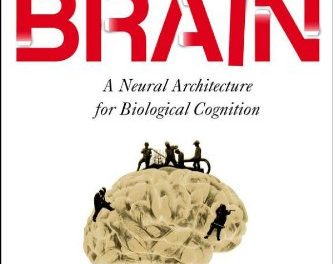 Author: Woodruff T. Sullivan III
Author: Woodruff T. Sullivan III
Publisher: Cambridge University Press – 542 pages
Book Review by: Sonu Chandiram
Radio astronomy is a field within astronomy, or a subfield. Radio astronomers study celestial or astronomical objects at radio frequencies. Radiation coming from the Milky Way was first detected in 1932 through radio waves by Karl Jansky at Bell Telephone Laboratories.
Stars and galaxies, as well as a new class of objects such as radio galaxies, quasars, masers, and pulsars were discovered in subsequent years by other radio astronomers. The discovery of cosmic microwave background radio, or CMBR for short was done through radio astronomy.
Radio telescopes, which consist of large radio antennas, are used either singularly or with multiple linked telescopes using the technique of radio interferometry and aperture synthesis.
This observation method allows radio astronomers to achieve high angular resolution, as the resolving power of an interferometer is set by the distance between its components, rather than the size of its components.
Angular resolution or spatial resolution describes the ability of any image-forming device such as an optical or radio telescope, a microscope, a camera, or an eye, to distinguish small details of an object, thereby making it a major determinant of image resolution. In physics and in other geosciences. the term spatial resolution refers to the precision of a measurement with respect to space.
One good example of an intetferometer is the Karl G. Jansky Very Large Array (VLA), a centimeter-wavelength radio astronomy observatory located in central New Mexico on the Plains of San Agustin, between the towns of Magdalena and Datil, located some 50 miles west of Socorro. The VLA consists of twenty-seven 25-meter radio telescopes deployed in a Y-shaped array and all the equipment, instrumentation, and computing power to function as an interferometer.
Each of the massive telescopes in this VLA is mounted on double parallel railroad tracks, so the radius and density of the array can be transformed to adjust the balance between its angular resolution and its surface brightness sensitivity
Before Jansky observed the Milky Way in the 1930s, physicists speculated that radio waves could be observed from astronomical sources. In the 1860s, James Clerk Maxwell’s equations had shown that electromagnetic radiation is associated with electricity and magnetism, and could exist at any wavelength.
Several attempts were made to detect radio emission from the Sun including an experiment by German astrophysicists Johannes Wilsing and Julius Scheiner in 1896 and a centimeter wave radiation apparatus set up by Oliver Lodge between 1897-1900.
These attempts were unable to detect any emission due to technical limitations of the instruments. The discovery of the radio reflecting ionosphere in 1902, led physicists to conclude that the layer would bounce any astronomical radio transmission back into space, making them undetectable.
This book provides a definitive history of the formative years of radio astronomy, and is invaluable to engineers, historians of science and engineering, scientists, and anyone interested in this field. It covers the whole of worldwide radio and radar astronomy, including:
- Early discoveries of cosmic noise by Jansky and Reber before World War II
- Wartime detections of solar noise
- Discovery of radar stars, lunar and meteor radar experiments
- Detection of the hydrogen spectral line
Discoveries of Hey, Lovell, Pawsy, Ryle, and others in the decade following the war, revealing an entirely different sky than that of visual astronomy
It is a story of the people who shaped the intellectual, social, and technical aspects of the field now known as radio astronomy. This book, first published in 2009 is based on correspondence, literature, and numerous photographs, as well as interviews of, and quotes from 115 pioneering astronomers, providing fascinating insights into how radio astronomy developed.
This book of over 540 pages is organized around 18 chapters and three appendices we list below:
- Prologue
- Searching for solar Herzian waves
- Jansky and his star static
- Grote Reber: science in your backyard
- Wartime discovery of the radio sun
- Hey’s army group after the war
- Radiophysics Laboratory, Sydney
- Ryle’s group at the Cavendish
- Lovell at Jodrell bank
- Other radio astronomy groups before 1952
- Meteor radar
- Reaching for the moon
- The radio sun
- Radio stars
- Theories of galactic noise
- The 21 cm hydrogen line
- New astronomers
- A new astronomy
- Appendix A: A primer on the techniques and astrophysics of early radio astronomy
- Appendix B: The Interviews
- Appendix C: Bibliographic notes and archival sources
- The writer of the Forward to this book Sir Francis Graham Smith notes that the author Woodruff Sullivan is “an experienced astronomer well placed to relate the history of the technical advances of the early years.”
Indeed, this book provides an excellent account of the birth and development of radio astronomy, by Woodruff Sullivan, a project he began as early as in 1971, and took painstaking efforts to make sure it turned out to be an accurate and great history of radio astronomy before it was published.
Editor:
Woodruff T. Sullivan III is Professor of Astronomy and Adjunct Professor of History at the University of Washington in Seattle. Trained as a radio astronomer, his research has included studies of the interstellar medium in our own and other galaxies, the search for extraterrestrial intelligence, and astrobiology. Besides this book published in 2009, he is also the author of Classics in Radio Astronomy (1982) and The Early Years of Radio Astronomy (1984).
Foreword Writer:
Sir Francis Graham Smith is Emeritus Professor at Jodrell Bank Observatory, where he was Director from 1981 to 1988. He also served as Director of the Royal Greenwich Observatory from 1976 to 1981 and the thirteenth Astronomer Royal from 1982 to 1991.






